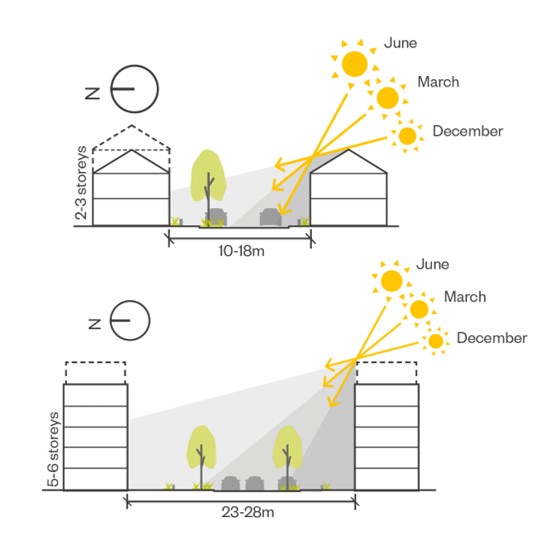Overshadowing
The massing and density of a development can influence access to sunlight, daylight and solar gains to internal and external spaces.
Site layout
It is best practice to avoid placing higher elements to the south of a site, ideally these should be placed to the north to avoid excessive shading of other buildings and external amenity spaces. Consideration should also be given to surrounding buildings off site. Allow strategic breaks in building massing to let sunlight in. When designing for sunlight consider the suns angle at different times of the day across different seasons.
Distances between buildings
Building spacing and street proportions should be assessed to reduce the extent overshadowing. It is good practice to allow a distance of at least 1/1.5 times the buildings height between buildings. There is a balance to strike in dense contexts as taller buildings will make it difficult for all dwellings to receive sunlight in winter months. Ensure that year-round sun paths are thoroughly considered when designing to allow as many dwellings as possible to receive sunlight.
Courtyards and public amenity
Sunlight is a welcome feature of external spaces such as communal gardens, public squares and roof terraces. It is best practice to design for at least half of the total area of amenity space to receive direct sunlight for two hours on the 21st March (spring equinox) as per BRE guidance “Site layout planning for daylight and sunlight”.
Design Actions
- Place higher elements to the north of the site to avoid overshadowing on and around the site
- Allow a distance of 1-1.5 times the building’s height between buildings to avoid overshadowing
- Design green amenity space to receive sunlight as per BRE guidance
Page updated: 27/09/2022

